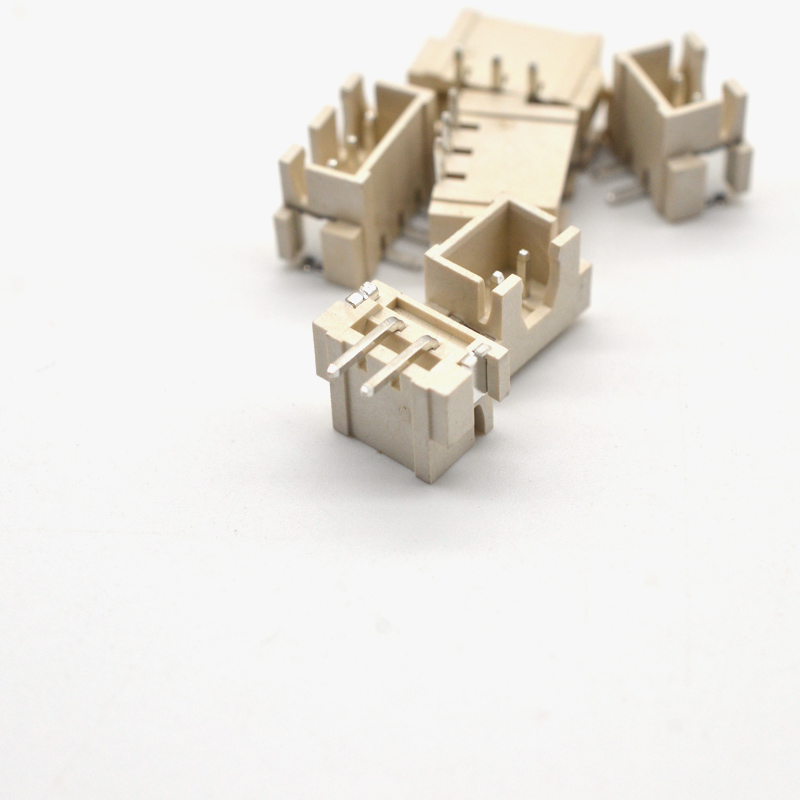Méthode de connexion de l'industrieconnecteur
Industrial connecteurs are also called connecteurs and plugs. Its function is to connect two active components and act as a current and signal transmission function. With the changes in the application environment, connecteurs ont dérivé une variété de méthodes de connexion, le but est de mieux s'adapter à l'environnement de la scène et d'assurer une transmission de signal stable.
1. Connexion filetée
C'est la méthode de connexion traditionnelle, et il sera utile de travailler dans certains composants de plus grande taille ou dans un environnement avec de fortes vibrations. L'avantage de ce type de connexion est qu'il est fiable à l'usage, et que le câble est fixé par le frottement de l'écrou et de l'engrenage. Si vous ajoutez un fusible pour éviter le desserrage, l'effet sera meilleur. L'inconvénient est que la vitesse de démontage est relativement lente, et qu'il faut un peu d'électricité pour rétracter le fil, ce qui prend du temps.
2. Connexion à baïonnette
Il s'agit d'un formulaire de connexion qui peut se connecter et se déconnecter rapidement. Il est souvent utilisé pour connecter deux composants électriques simples.Connecteursthat are connected by a snap-in type will mark the correct snap-locking direction at the buckle. The user can observe whether the buckle is installed in the small hole on the side of the connecteur nut.
3. Prise de connexion
The plug-in connection method is a commonly used connection method. The plug and socket of the connecteur can be connected and separated by moving in the horizontal direction. No twisting and optional installation are required, and the connection can be completed in a short time. And separation. The common plug connection has two structures: ball and pin. This connection method saves the traditional mechanical locking mechanism, so once the connecteur is inserted by mistake, it is very difficult to pull it out.
4. Connexion armoire
Il est basé sur la méthode de connexion électrique qui est proche du châssis et doit être connecté en aveugle à l'équipement. L'utilisation de cette méthode peut rendre l'équipement électrique très léger et petit. Chaque unité peut fonctionner indépendamment l'une de l'autre, ce qui est plus facile à entretenir et plus fiable. Étant donné que l'opérateur de ce mode de connexion ne peut pas percevoir la connexion, il doit y avoir un dispositif de positionnement précis pour aider à la connexion en douceur. Utilisez généralement un contact flottant ou une conception à ressort pour assurer sa connexion correcte.
5. Connexion à souder
Soldering connection refers to the formation of continuous metal between the solder and the surface to be soldered. Therefore, the prerequisite for the connecteur is to have solderability. The common plating on the soldering end of the connecteur includes metals such as tin alloy, silver and gold. The reed type contact has the welding piece type, the punching welding piece type and the notched welding piece type for the common welding end: the pinhole contact has a drilling arc notch for the common welding end.
6. Percez la connexion
La connexion de perçage est également appelée connexion à déplacement d'isolant. Il présente les caractéristiques d'une grande fiabilité, d'un faible coût et d'une utilisation pratique. Il a été largement utilisé dansconnecteurs in the printing industry. It is suitable for interconnection between ribbon cables. It is not necessary to puncture the insulation layer of the cable when connecting. The tip of the "U"-shaped contact spring of the connecteur is used to pierce the insulation layer, so that the conductor of the cable slides into the concave groove of the connecteur and is fixed, so that the cable and The connecteurssont en contact étroit.


